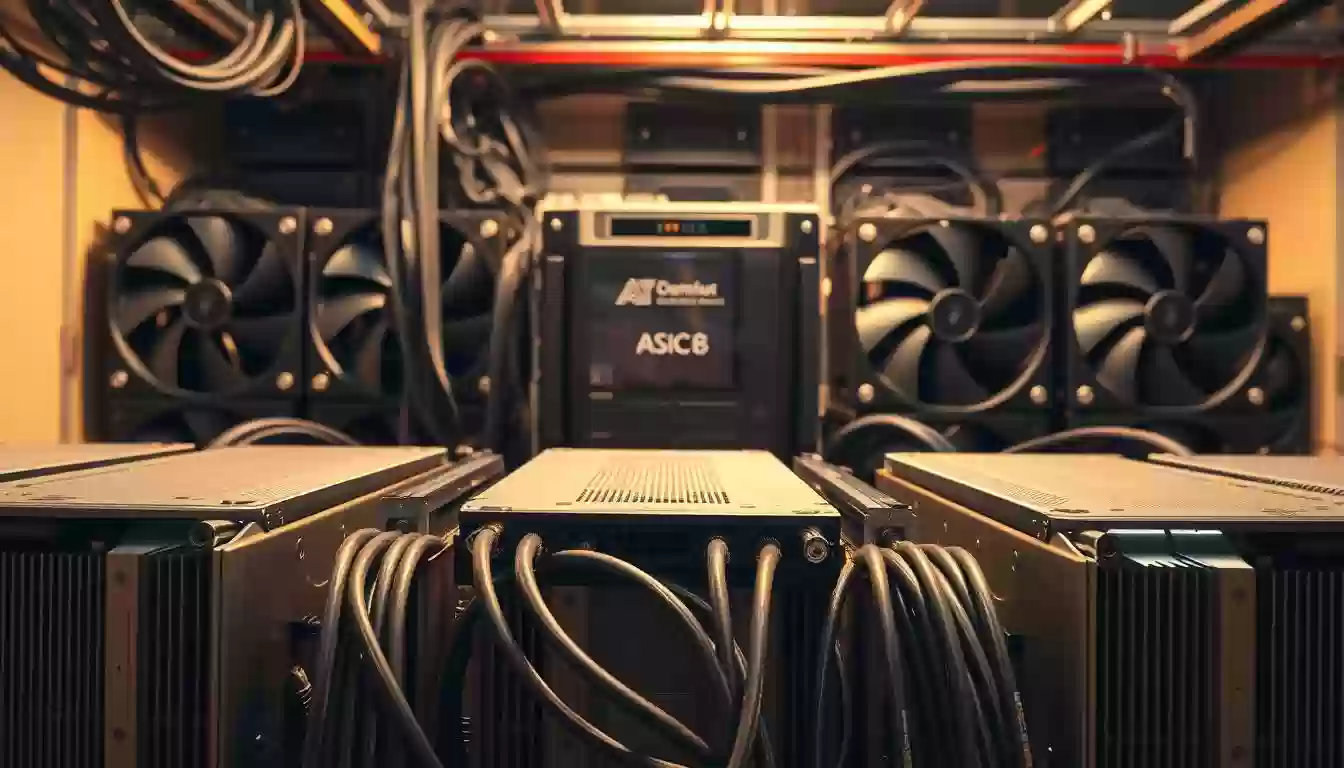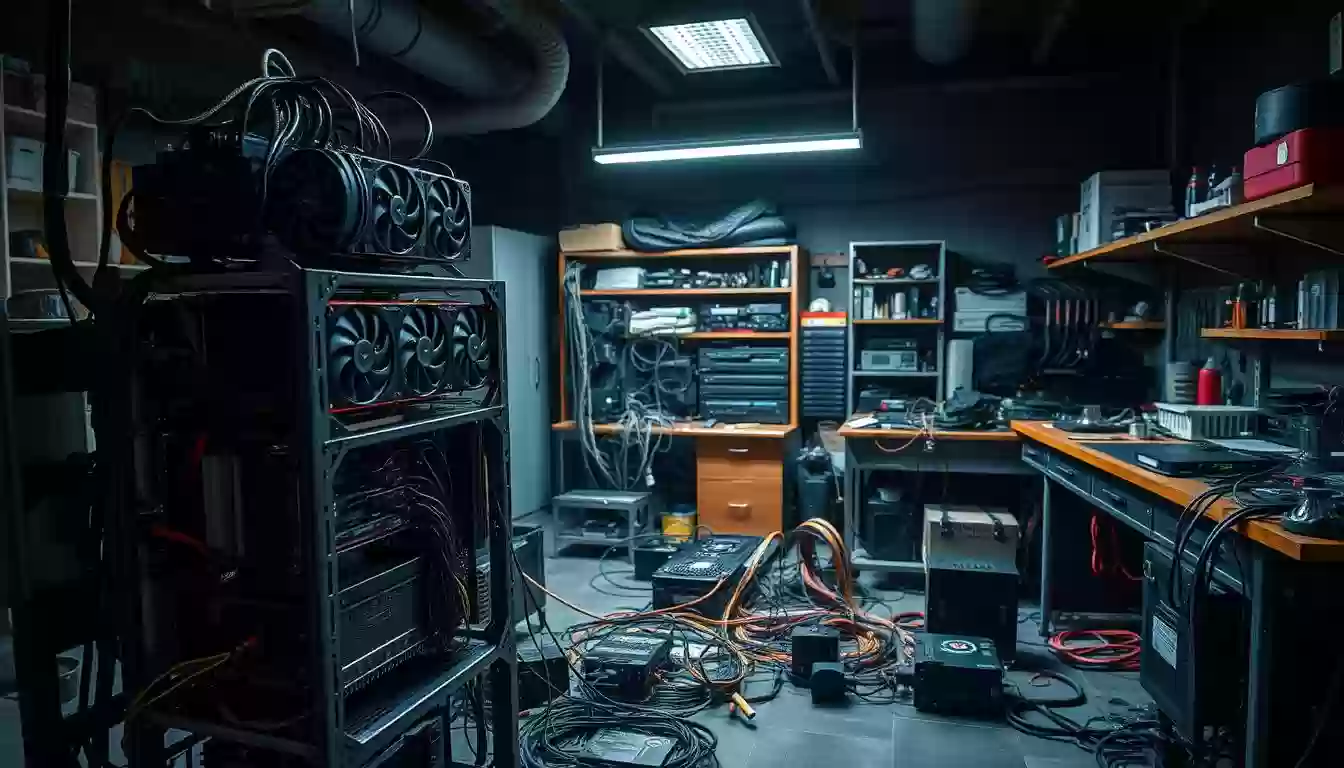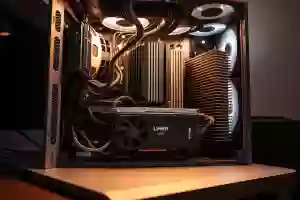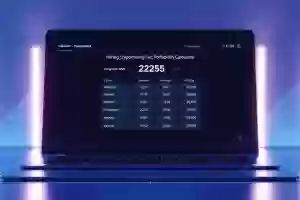GPU Mining vs ASIC Mining: Which is Better for You?
 05 Mar 25
05 Mar 25
When it comes to cryptocurrency mining, choosing the right hardware is crucial. Both GPU mining and ASIC mining have their strengths, but they cater to different needs and preferences. Whether you're a seasoned miner or just starting out, understanding the differences between these two technologies can help you make an informed decision.
ASIC miners, like those from Bitmain and Canaan, are specialized hardware designed specifically for mining. They offer high hash rates and energy efficiency, making them a popular choice for large-scale operations. On the other hand, GPU mining, using graphics cards from brands like Nvidia and AMD, provides flexibility and the ability to mine various cryptocurrencies.
The choice between an ASIC miner and a GPU mining rig depends on your priorities. If you're looking for high efficiency and ease of use, ASICs might be the better option. However, if you prefer versatility and the ability to mine different coins, GPUs could be more suitable. Consider factors like initial cost, setup complexity, and market conditions to determine which path aligns best with your goals.
Learn more about the pros and cons of each in our detailed guide: ASIC mining.
Understanding Cryptocurrency Mining Basics
Cryptocurrency mining is the backbone of blockchain networks, enabling secure transactions and the creation of new coins. This process involves solving complex mathematical puzzles to validate transactions and add them to a public ledger. The evolution of mining has transformed significantly, from using basic computer processors (CPUs) to more advanced graphics processing units (GPUs) and finally to specialized application-specific integrated circuits (ASICs).
Early miners used CPUs, but as mining became more competitive, GPUs became the preferred choice due to their higher processing power. However, the introduction of ASICs revolutionized the industry, offering unparalleled efficiency for specific mining algorithms. Today, ASIC miners dominate the landscape for cryptocurrencies like Bitcoin, while GPUs remain popular for mining algorithms that are resistant to ASICs, such as Ethereum Classic and Dogecoin.
The mining landscape is shaped by various factors, including electricity costs, hardware availability, and market conditions. For instance, regions with low electricity rates, like Iceland, have become hubs for large-scale mining operations. Conversely, areas with high electricity costs make mining less profitable for individual miners. The choice between an ASIC miner and a GPU mining rig depends on the miner's goals, with ASICs excelling in efficiency for specific coins and GPUs offering flexibility across multiple cryptocurrencies.
Understanding the role of hardware is crucial for miners. ASICs are designed for single-purpose use, making them highly efficient but less versatile. GPUs, while less efficient for certain algorithms, can be repurposed for other tasks like gaming or computational work. As the cryptocurrency market continues to evolve, miners must stay informed about the latest trends and technologies to remain competitive.
Exploring ASIC Mining: Definition and Benefits
Cryptocurrency mining has evolved significantly, and one of the most notable advancements is the development of ASIC (Application-Specific Integrated Circuit) mining. Designed specifically for mining cryptocurrencies, ASICs are specialized chips that optimize mining performance by maximizing hash rates while minimizing energy consumption.
What is ASIC Mining?
ASIC mining uses custom-built chips tailored for the complex mathematical calculations required in cryptocurrency mining. These chips are far more efficient than general-purpose GPUs because they are designed for a single task. Leading manufacturers like Bitmain and Canaan have popularized ASIC miners, making them the preferred choice for many miners.
Advantages and Limitations of ASIC Miners
ASIC miners offer several advantages. They deliver higher hash rates and better power efficiency, significantly reducing electricity costs. Additionally, they are user-friendly with a plug-and-play setup, appealing to both newcomers and commercial operations. However, ASICs have limitations. They are less flexible, as they are designed for specific algorithms, and the high initial investment can be a barrier for some. Despite these drawbacks, the long-term energy savings often outweigh the upfront costs, making ASIC miners a viable option for those focused on efficiency.

Diving into GPU Mining: Flexibility and Versatility
For those seeking adaptability in the ever-evolving world of cryptocurrency mining, GPU mining stands out as a versatile option. Unlike ASICs, which are built for a single purpose, GPUs offer the flexibility to mine various cryptocurrencies while serving other computational needs.
Understanding GPU Mining
GPU mining leverages the power of graphics processing units, typically found in gaming computers, to solve the complex mathematical puzzles required for cryptocurrency mining. This approach allows miners to switch between different cryptocurrencies, making it a preferred choice for those exploring multiple coins.
Pros and Cons of Using GPUs
| Aspect | GPU Mining | ASIC Mining |
|---|---|---|
| Hash Rate | 30-100 MH/s | Up to 3 GH/s |
| Power Consumption | 200-300 watts | Often exceeds 1000 watts |
| Flexibility | Can mine multiple cryptocurrencies | Restricted to specific algorithms |
| Cost | Initial investment: $1,500-$6,000 | Starts around $1,000 |
| Secondary Use | Reusable in gaming, rendering, and machine learning | Primarily for mining |
While GPUs offer flexibility and lower entry barriers, they consume more power and may require complex setups. However, their versatility makes them a valuable asset for miners looking beyond a single cryptocurrency.
Many miners start with GPUs due to their multi-purpose nature and ease of availability. As the cryptocurrency landscape continues to evolve, GPUs remain a practical choice for those seeking flexibility and adaptability in their mining operations.
GPU mining vs ASIC mining: Performance and Profitability
When evaluating cryptocurrency mining options, performance and profitability are paramount. Understanding the distinctions between GPU and ASIC mining helps miners make informed decisions tailored to their goals.
Hash Rate and Efficiency Comparison
ASIC miners, such as the Antminer S19 XP, boast impressive hash rates of 140 TH/s, significantly outperforming high-end GPUs like the NVIDIA RTX 4090, which delivers around 120 MH/s for Ethereum. This disparity highlights ASICs' superiority in raw processing power for specific algorithms.
Cost, Energy Consumption, and ROI Factors
| Aspect | ASIC Miners | GPU Miners |
|---|---|---|
| Hash Rate | Up to 140 TH/s | Up to 120 MH/s |
| Power Consumption | 3010W | 450W |
| Efficiency | 21.5 J/TH | 3.75 W/MH |
| Initial Cost | $1,000+ | $1,500+ |
ASIC miners offer higher efficiency and faster ROI due to lower power consumption and higher hash rates, despite their limited flexibility. GPUs, while more versatile, may require more time to recoup investments due to higher energy costs and lower hash rates.
Technical Considerations and Setup Complexities
Setting up mining equipment can be a daunting task, especially for newcomers. Both ASIC and GPU miners face unique challenges that require careful planning and technical expertise.
Installation and Configuration Challenges
ASIC miners often require modifications to power setups due to their high energy demands. Initial configuration steps include setting up the miner, configuring network settings, and installing necessary software. GPUs, on the other hand, involve building a rig and optimizing software for performance.
| Aspect | ASIC Miners | GPU Miners |
|---|---|---|
| Power Requirements | High, may need special outlets | Lower, but still significant |
| Setup Complexity | Plug-and-play after initial setup | Complex, requires building and configuring |
| Software Needs | Custom firmware may be needed | Drivers and mining software essential |
Heat management and electricity costs are crucial considerations. Proper cooling systems are necessary to prevent overheating, and miners should calculate their power expenses to ensure profitability.

Troubleshooting common issues like connectivity problems or low hash rates can be challenging. Starting with a single unit and gradually scaling up is advisable. While ASICs are easier to use, GPUs offer more flexibility for those willing to invest time in setup and optimization.
Market Trends and Future Outlook
The cryptocurrency mining landscape is constantly evolving, influenced by technological advancements and market dynamics. As we look ahead, understanding these trends becomes crucial for making informed investment decisions.
Impact of Market Conditions on Mining Equipment
Market fluctuations significantly affect mining hardware investments. For instance, the price of cryptocurrencies and events like halving can influence the profitability of both ASIC miners and GPUs. When crypto prices rise, demand for mining hardware typically increases, while downturns can lead to reduced investments.
Long-Term Profitability and Investment Considerations
Long-term profitability depends on operational efficiency and technological developments. ASIC miners, with their high hash rates and energy efficiency, often offer quicker returns. However, GPUs provide flexibility, allowing miners to switch between cryptocurrencies, which can be advantageous in volatile markets.
| Aspect | ASIC Miners | GPUs |
|---|---|---|
| Hash Rate | Higher, optimized for specific algorithms | Lower but versatile across multiple cryptocurrencies |
| Power Consumption | Generally more efficient | Higher, leading to increased electricity costs |
| Flexibility | Limited to specific algorithms | Can mine various cryptocurrencies |
| Resale Value | Depreciates quickly as technology advances | Retains value longer due to versatility |
Considering these factors, miners should evaluate their goals and market conditions before investing. Diversifying investments and staying informed about emerging technologies can help navigate the dynamic mining landscape effectively.
Conclusion
In the world of cryptocurrency mining, the choice between GPU mining and ASIC mining hinges on your specific goals and resources. ASIC miners excel in delivering high performance for specific algorithms, making them ideal for those prioritizing efficiency and simplicity. On the other hand, GPU mining offers unmatched versatility, allowing miners to explore multiple cryptocurrencies and adapt to market changes.
A key consideration is the trade-off between flexibility and performance. While ASICs provide superior hash rates and energy efficiency for targeted algorithms, GPUs offer the freedom to mine various coins and serve other computational purposes. Additionally, initial costs, setup complexity, and long-term profitability are crucial factors to evaluate.
Looking ahead, the cryptocurrency mining landscape is poised for continuous evolution. Advances in hardware and software, along with shifting market dynamics, will play significant roles in shaping the future of mining. As the industry matures, miners must stay informed and adaptable to navigate this dynamic environment effectively.
Ultimately, whether you opt for an ASIC miner or a GPU mining rig, aligning your choice with your operational needs and investment capabilities is essential. By considering these factors and staying attuned to market trends, you can make informed decisions that support your mining aspirations in the years to come.
FAQ
What is the difference between GPU mining and ASIC mining?
GPU mining uses graphics processing units, which are versatile and can handle multiple tasks beyond mining. ASIC mining, on the other hand, uses application-specific integrated circuits designed solely for mining, offering higher efficiency but less flexibility.
Which type of mining is more profitable for a beginner?
Profitability depends on your resources and goals. ASICs often offer higher hash rates and energy efficiency, but GPUs can be more affordable and versatile for those new to mining.
What factors affect the profitability of cryptocurrency mining?
Key factors include electricity costs, the type of hardware used, market conditions, and the specific cryptocurrency being mined. Researching these elements is crucial for maximizing returns.
How do I set up a mining rig?
Setting up a mining rig involves choosing the right hardware, installing the necessary software, and ensuring proper cooling and power supply. Guides and tutorials can help simplify the process.
What is the role of hash rate in mining?
Hash rate measures a miner's computational power. A higher hash rate increases the chances of solving complex mathematical problems and earning block rewards.
Can I use my computer's GPU for mining?
Yes, many modern GPUs are capable of mining. However, consider the wear and tear on your hardware and the potential impact on your computer's performance for other tasks.
How do market conditions impact mining equipment choices?
Market trends can influence the demand and profitability of specific hardware. Staying informed about market trends helps in making the best choices for your mining setup.
What are the advantages of using ASIC miners?
ASIC miners are built specifically for mining, offering superior efficiency and hash rates compared to GPUs. They are a popular choice for serious miners looking to optimize performance.
How does electricity consumption affect mining profitability?
High electricity costs can significantly reduce mining profits. Choosing energy-efficient hardware and optimizing your setup is essential to maintain profitability.
What is the future outlook for cryptocurrency mining?
The future of mining is expected to evolve with advancements in technology and changes in market conditions. Staying updated on industry trends and regulations is key to long-term success.





























